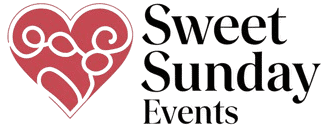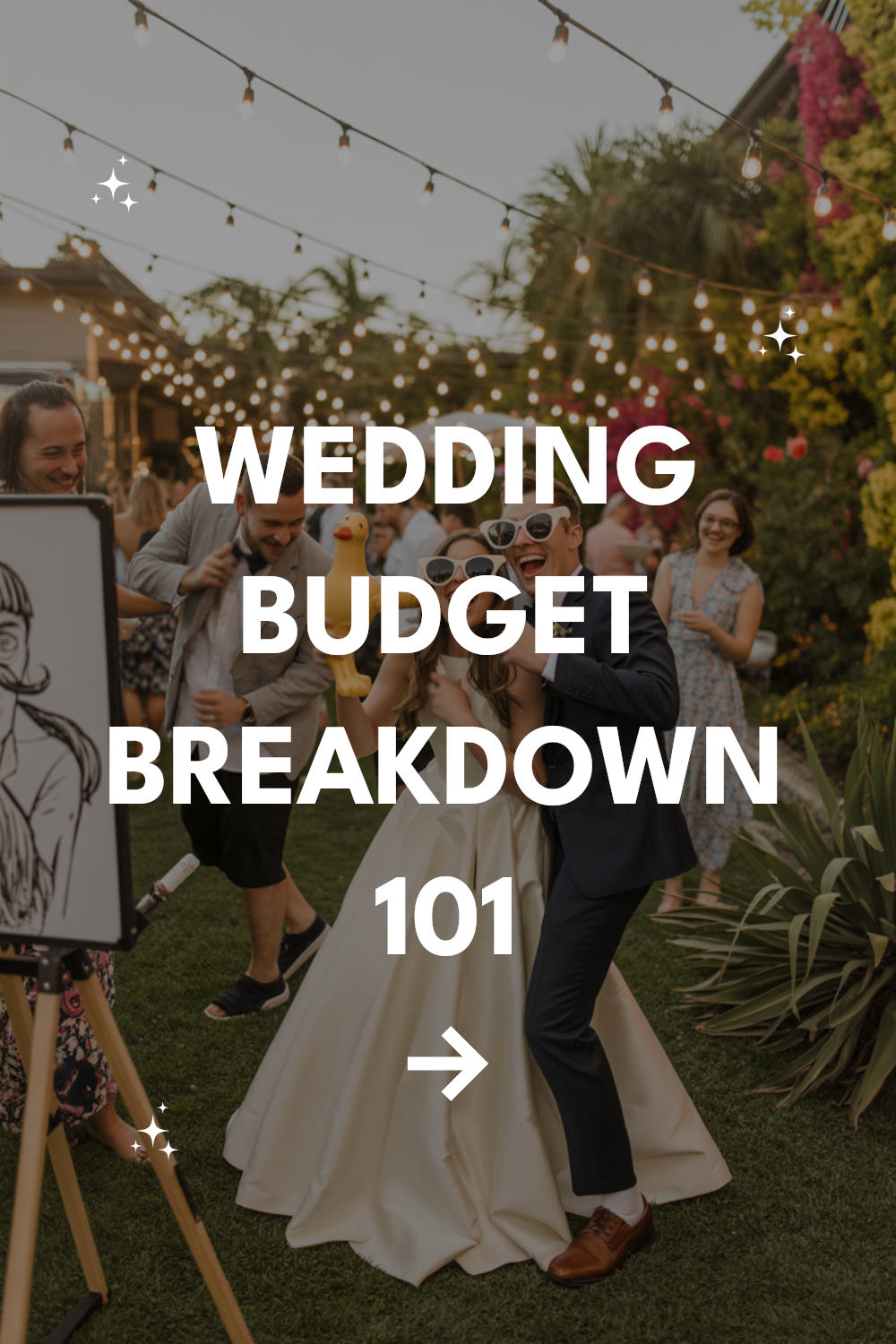Your wedding budget doesn’t have to be a source of panic or a reason to elope to Vegas (though honestly, Vegas weddings have their charm).
Breaking down your wedding costs into manageable categories helps you see where your money’s actually going and prevents those “how did we spend $500 on napkins?” moments.
The Big Picture Before the Details
Most couples dive straight into Pinterest boards and venue hunting without establishing their financial foundation. This backwards planning leads to heartbreak when you fall in love with a $15,000 venue and realize you only have $8,000 for everything.
Start with your total budget—whether that’s $5,000 or $50,000—and work backwards. The magic happens when you know your limits before you start shopping, not after you’ve already mentally planned your dream day.
Venue and Catering Take the Lion’s Share
Your venue and food will likely eat up 40-50% of your total budget, sometimes more. This isn’t necessarily bad news—it just means you need to be realistic about what’s left for everything else.
Reception venues often bundle services differently. Some include tables, chairs, linens, and basic lighting, while others charge separately for every fork. Ask for itemized quotes so you can compare apples to apples, not apples to mysterious fruit baskets.
Reception Venue Costs
The venue cost varies wildly based on location, day of the week, and season. Saturday evening in June will cost significantly more than Thursday afternoon in February, but you probably already suspected that.
Hidden venue costs sneak up on couples constantly. Service charges, gratuities, overtime fees, and equipment rentals can add 20-30% to your initial quote.
Always ask about additional fees upfront—venues appreciate direct questions more than surprised reactions later.
Catering Calculations
Food costs typically run $25-$150 per person, depending on your menu style and location. Cocktail hour appetizers, plated dinners, and late-night snacks all add up quickly.
Bar service deserves special attention in your budget. Open bars, wine-only packages, and cash bars each have different price points and guest satisfaction levels.
Consider your crowd—if Uncle Bob expects premium whiskey, budget accordingly or prepare for some grumbling.
Photography and Videography Capture Forever
Professional wedding photography typically costs 10-15% of your total budget. This might seem steep until you realize these images will outlast your dress, your flowers, and possibly your marriage (kidding—mostly).
Wedding photographers often offer packages that include engagement sessions, multiple shooters, and various hour coverage options. Don’t automatically choose the cheapest package if it only covers four hours—weddings have a way of running longer than expected.
Choosing Your Visual Investment
Videography adds another layer to your visual memories but also to your budget. Wedding videos range from simple ceremony recordings to cinematic productions with drone footage and custom soundtracks.
Decide early whether moving images matter to you as much as still photos. Some couples prefer investing heavily in photography and skipping video entirely, while others want comprehensive coverage of both.
Attire and Beauty Services
Wedding attire extends far beyond just the dress and suit. Shoes, undergarments, accessories, alterations, hair, makeup, and grooming services all contribute to your wedding day look.
Budget 8-10% of your total for attire and beauty services. This covers both partners’ complete outfits plus professional hair and makeup for the wedding party if you’re covering those costs.
Dress and Suit Realities
Wedding dress shopping comes with hidden costs that bridal salons don’t always mention upfront. Alterations typically cost $200-$600 additional, depending on how much adjustment your dress needs.
Suits and tuxedos offer more budget flexibility. Renting works well for traditional styles, while purchasing makes sense if you’ll wear the suit again or want something unique.
Beauty Service Planning
Professional hair and makeup for your wedding day typically costs $300-$800 total. Trial runs add extra cost but prevent wedding day disasters—definitely worth the investment.
Book beauty services early, especially during peak wedding season. The best artists get reserved quickly, and you don’t want to settle for someone whose style doesn’t match your vision.
Flowers and Decorations Set the Scene
Floral arrangements and decorations usually account for 8-10% of wedding budgets. This category includes bridal bouquets, boutonnieres, centerpieces, ceremony decorations, and any additional floral installations.
Seasonal flower choices significantly impact costs. Peonies in December cost substantially more than roses, while local wildflowers in spring offer budget-friendly beauty.
Maximizing Floral Impact
Consider which flowers actually matter to you versus which ones guests might not even notice. Elaborate bathroom arrangements might not be worth the cost if your budget is tight.
Repurposing ceremony flowers for reception decorations stretches your floral budget further. Altar arrangements can become cocktail hour focal points, and bridesmaids’ bouquets can decorate the head table.
Music and Entertainment Keep Energy High
DJ or band services typically cost 8-10% of your wedding budget. This investment directly impacts your guests’ experience—good music keeps people dancing, while poor audio ruins heartfelt speeches.
Interview multiple music options and ask for references from recent weddings. The cheapest option often lacks proper equipment or experience handling wedding timelines and crowd dynamics.
Sound System Essentials
Ceremony sound systems require separate consideration from reception music. Outdoor ceremonies especially need proper amplification so guests can actually hear your vows.
Microphone quality matters more than you might expect. Crackling audio or feedback during your ceremony creates awkward moments that even great photography can’t fix.
Transportation and Logistics
Wedding day transportation often gets overlooked in initial budget planning. Getting yourself, your wedding party, and potentially guests to various locations requires coordination and money.
Budget for transportation between ceremony and reception venues if they’re different locations. Factor in traffic, parking availability, and timing buffers—rushing between venues creates unnecessary stress.
Stationery and Communication Costs
Wedding invitations, save-the-dates, programs, menus, and thank-you cards add up quickly. Digital options reduce costs significantly while still looking elegant and professional.
Postage costs surprise many couples. Mailing 150 invitations with response cards costs $150-$200 in stamps alone, before considering any special postage for unique envelope sizes or weights.
The Emergency Fund Reality
Every wedding budget needs a 5-10% cushion for unexpected expenses. Something always costs more than anticipated, whether it’s extra guests, overtime charges, or last-minute additions you suddenly can’t live without.
This buffer prevents panic when your final headcount increases or when you decide you absolutely need those upgraded linens. Consider it insurance for your sanity, not wasted money.
Making Your Numbers Work
| Budget Category | Typical Percentage | Notes |
|---|---|---|
| Venue & Catering | 40-50% | Includes food, drinks, service fees |
| Photography | 10-15% | Professional packages vary widely |
| Attire & Beauty | 8-10% | Both partners plus alterations |
| Flowers & Decor | 8-10% | Seasonal choices affect pricing |
| Music & Entertainment | 8-10% | DJ or band plus sound equipment |
| Transportation | 2-5% | Varies by venue locations |
| Stationery | 2-3% | Digital options reduce costs |
| Emergency Buffer | 5-10% | Essential for unexpected expenses |
Your actual percentages might shift based on your priorities. Couples who prioritize photography might spend 20% there while reducing floral costs. The key is making conscious choices rather than accidental overspending.
Budget Success Strategies
Track expenses in real-time using spreadsheets or wedding planning apps. Seeing your running total prevents that horrible moment when you realize you’ve already spent your entire budget with three months still to go.
Get quotes in writing for every service. Verbal estimates often increase once you’re committed, but written quotes provide protection and clarity for both parties.
Your Money, Your Choices
Wedding budgets aren’t about right or wrong spending—they’re about aligning your money with what actually matters to you as a couple. Some people care deeply about flowers while others would rather invest in an open bar and takeout pizza.
The best wedding budget is one you can afford without going into debt or sacrificing your financial future. Your marriage will last longer than one day, so plan accordingly and enjoy the process of creating something beautiful within your means.


